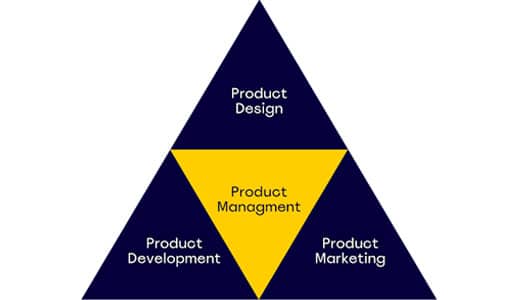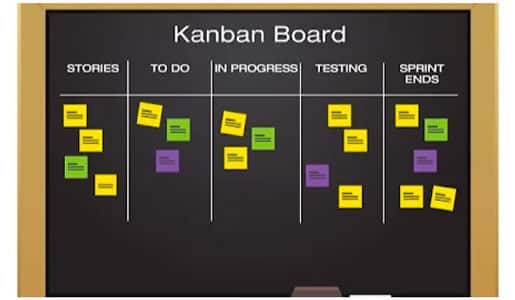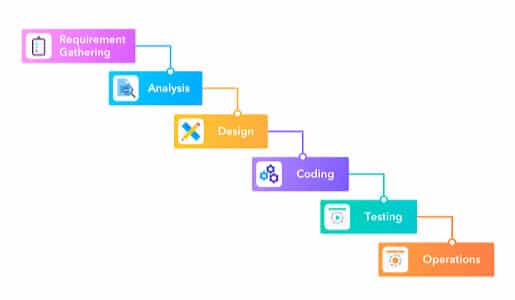
A product may flourish or flounder depending on how it is managed. Often, web product management requires a committed product manager who can carefully plan the product’s lifecycle — effective launching, quick feedback implementation, and timely updates.
Failing to do so can lead to technical issues like code errors, slow loading time, browser compatibility issues, security vulnerabilities, and more. And this can lead to customer dissatisfaction and, vis-a-vis, business loss.
Product management connects your business to customers through improved user experience, content strategy, design, and product development. But, managing a web product is often a complex task involving careful preparation, creating open lines of communication, teamwork, a solution-driven approach, and keeping updated with the market. Therefore, it requires planning, setting objectives, and understanding user needs.
Businesses need a successful web product management strategy to compete in today’s industry. The tips below should help the same.
1. Effective communication
Effective communication is the key to ensuring that everyone understands the product’s purpose and how it should be managed. This includes communicating the product’s features and how they should be used, how they should market the product, and how best to measure its success (including product management KPIs). This requires regular, product-focused communication between the product manager, marketing, support, and sales team.

Communication between the product manager and other stakeholders, such as developers, designers, marketers, and customers, is essential to ensure everyone is on the same page. They work in tandem to see that the product meets users’ needs.
Ideally, product managers should reach a consensus regarding communication preferences at the start of a project. This helps to create a blueprint for efficient communication that all team members can understand and follow. Use a product management platform that works best for your team, whether on-premise or cloud-based and set up a central source of communication that integrates various communication channels. This ensures everyone is on the same page and no one is left out of important conversations.
Communication between the product manager and customers is essential. It implies receiving feedback and using it to improve the product. This includes gathering customer feedback and using it to make changes to the product, as well as understanding how customers are using the product to identify potential improvements.
2. Choose the right methodology
Product management requires adopting suitable methodologies that organize and define rules to improve the output. Here are some well-known methods that you can consider.
Agile
The agile methodology focuses on breaking a complete project into smaller activities, such as research and wireframing, rather than pivoting to significant milestones.
Such steps become the milestones for web product milestones, which allow monitoring progress at each stage.
Agile methodology is based on the —
- People and interactions rather than systems and machinery.
- Ready-to-use software is the priority, whereas detailed instructions and documentation can take the back seat.
- Collaborating with a customer is more important than negotiating a contract.
- Adapting to new circumstances rather than sticking to a set schedule
Kanban
Adopt Kanban methodology for web product management that sets restrictions on the amount of work that may be done in progress (WIP) at any moment. Here, tasks are distributed over numerous columns based on their status.

Source Example of how Kanban board looks like.
Kanban boards organize projects by breaking them into manageable chunks and then physically advancing each column (to-do | doing | done) when work is finished.
The board view aids teams in identifying potential bottlenecks so that they may be addressed before they derail the product entirely. Such a framework stops teams from wasting time on too many projects at once and encourages them to focus on the important ones, boosting productivity.
Waterfall
The waterfall methodology has project steps in a strict chronological order, with no skipping forward.

Source Example of waterfall method.
Using this technique, ensure the following pattern mentioned below —
- Requirement gathering
- Requirement analysis
- Design the framework
- Creating a product or working on an iteration
- Testing
- Deployment
- Maintenance
Since each process phase must be completed before moving on to the next, the project’s development follows a single, consistent path. Often, Gantt Chart is used to map out the waterfall.
3. Defining the scope of the product
Scope creep may hurt your resources and profitability for several reasons —
- Spending more time working on activities that weren’t agreed upon
- Using up extra resources to complete the tasks on time.
- Multiple reiterations delay the timeline.
Therefore, it is best to define the scope of your web product which includes the following —
- Costs: Determine how much time and money you and your team expect to spend on the project overall. This includes additional customer requests.
- Milestones: These are significant points in the project’s predetermined timeline. It includes Meetings, large deliverables (such as completed frameworks or a live website), and deadlines are all examples of milestones.
- Timeline: The beginning, end, and due dates for major milestones and deliverables.
- Delivery expectations: What the customer will get out of the product is called “deliverables.” The wireframe, mockups, and website prototype are all deliverables that define the evolution of a product.
- Periodic updates: When the customer may anticipate receiving updates on the project’s progress and whether or not spending is on track.
A web product manager prioritizes user stories and arranges them into road maps and release plans. Crucial user stories from the backlog are graphically represented on a road map, along with priorities and sets of related priorities called “epics.”
Next, a web product manager will roll out a release schedule. For example, it can be a part of a road map version in a timeline format where the project manager would communicate the intent to have “Feature A” available to customers in the first quarter of year 20XX, “Improvements B” and “C” in the second quarter, and new “Product D” available in the third quarter.
Wrapping up
Managing a web product effectively is a complex and time-consuming endeavor that needs forethought, strategy, and in-depth familiarity with the target audience. You can implement any of the aforementioned tips to function effectively in different aspects of web product management.
The success of a web product manager depends on anticipating user requirements, effective use of web development tools, and tailoring the web product to evolve it better. Often, it requires implementing metrics for measuring success and keeping tabs throughout the product life cycle.





